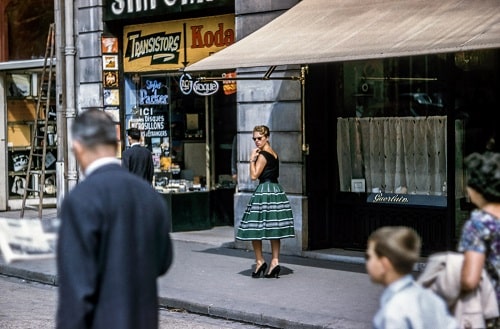I can’t believe it’s been two decades since “Friday Night Lights” first dazzled us with its raw portrayal of high school football in small-town Texas. When I think back to the first time I watched it, I remember being captivated not just by the thrilling games, but by the deep, personal stories of each character. This show wasn’t just about football; it was about life, the struggles, the triumphs, and everything in between.
Looking back now, 20 years later, I’m struck by how the themes of community, resilience, and identity still resonate so powerfully. It’s a testament to the show’s quality that it continues to evoke such strong emotions and thoughtful reflections. Join me as I dive back into the streets of Dillon, Texas, exploring how “Friday Night Lights” has left a lasting impact not only on television but on the hearts of its viewers.
Overview of Friday Night Lights
When I think back to “Friday Night Lights,” which first aired 20 years ago, it’s not just the intense football scenes or the dramatic game outcomes that resonate with me, but also the powerful narratives woven through the lives of the characters from the small town of Dillon, Texas. This show masterfully goes beyond the typical sports drama, tapping into the deep wells of personal struggle, communal bonds, and the pursuit of identity amidst formidable odds.
“Friday Night Lights” was exceptional in its portrayal of realistic, heartfelt drama, which allowed viewers like me to deeply empathize with the characters. Each episode felt like a glimpse into the complex lives of relatable people, each battling their own demons, yet striving for their personal best in and out of the athletic arena. The attention to detail in the character development is something that stood out throughout the series, ensuring that each character’s journey was both impactful and meaningful.
The setting of Dillon, a quintessential small American town, played a crucial role as well. It wasn’t just a backdrop for high school football; it was a vibrant character in its own right. Every location in Dillon—from the football field to local diners—felt imbued with a sense of community. It’s this portrayal of community that deftly encapsulates themes of unity and division, making the show a resonant piece on the American condition.
Moreover, what made “Friday Night Lights” particularly pioneering was its ability to address contemporary social issues subtly yet powerfully through its characters and story arcs. Issues like economic disparity, racial tensions, and personal accountability were all explored in ways that were both nuanced and compelling, making it not just entertainment but a conversation starter about real-world problems.
Reflecting on this series after two decades, I am struck by how potent and relevant its messages remain. The narrative integrity and emotional depth of “Friday Night Modern Lights” did not just paint a picture of life in Texas; it highlighted the universal struggles and triumphs of life itself. It is a show that deserves to be revisited, not only for its storytelling prowess but for the significant cultural conversations it fosters.
Cultural Impact and Legacy
“Friday Night Lights” isn’t just another sports drama; it’s a cultural touchstone that has influenced viewers and creators alike for two decades. Its resonance with real-life issues wrapped in engaging storytelling continues to be a benchmark for television series that aim to speak on both personal and societal levels.
Lasting Impact on Television
For me, one of the most significant achievements of “Friday Night Lights” is how it expanded the narrative scope of what a sports-themed TV show could encompass. It masterfully balanced the excitement of football with deep dives into issues like economic disparities, racial tensions, and personal growth, setting a high bar for character development and story arcs. The show’s use of a documentary-style filming technique also ushered in a new wave of realism in television production, which can be seen in the subsequent popularity of similar styles in other series. This method helped bridge the gap between the audience and characters, making the experiences on screen feel much more intimate and immediate.
Influence on Future Series
The ripple effect of “Friday Night Lights” on subsequent TV series is quite remarkable. It’s hard to watch current favorites like “This Is Us” or “Parenthood” without noticing traces of the emotional and narrative complexity that “Friday Night Lights” championed. This series showed that the audience craves not just entertainment but also a reflection on and connection to the characters that mirror their complexities and struggles. It paved the way for television that combines social commentary with relatable storytelling, encouraging viewers to engage critically with the content while still being thoroughly entertained. Through its pioneering spirit and innovative approaches, “Friday Night Generations” has indeed left a lasting imprint on the television landscape.
Technical Aspects
Exploring the technical aspects of “Friday Night Lights,” it’s clear the show set a high benchmark in television production quality. Let’s delve into how the cinematography and soundtrack played pivotal roles in enhancing the storytelling.
Cinematography
The cinematography of “Friday Night Lights” was groundbreaking for its time, employing techniques that brought a unique sense of realism and intimacy to the screen. The use of handheld cameras not only heightened the drama but also allowed viewers to feel as though they were part of the action, whether on the football field or in the characters’ personal spaces. This approach helped blur the lines between viewers and characters, making the emotional highs and lows of the show more impactful. The lighting choices also played a critical role, using natural light to its fullest to accentuate the raw, gritty texture of Dillon, Texas. The camera’s close-ups captured nuanced expressions, adding layers to the character development and making every frame meaningful.
Soundtrack and Scoring
The soundtrack and scoring of “Friday Night Lights” were just as integral as its visual components in crafting the show’s mood and atmosphere. The music selection included a mix of contemporary hits and more subdued, instrumental pieces that mirrored the emotional undercurrents of the series. Explosions in the Sky, the band responsible for much of the show’s instrumental music, provided tracks that were both swelling and minimalist, evoking a sense of aspiration and melancholy that mirrored the characters’ journeys. This careful curation of music ensured that the soundtrack resonated with the viewers, making the characters’ victories feel triumphant and their losses more poignant. The way music was woven into the scenes brought a cohesive auditory experience that perfectly complemented the visual storytelling.
Performance Review
Analyzing “Friday Night Lights” two decades after its premiere, I find its impact undeniably resonant, not just through its innovative technical aspects but profoundly through its performances and memorable episodes. Reflecting on how the show has aged, it’s clear that the storytelling and character portrayals were ahead of their time.
Cast’s Performance Over the Years
When considering the enduring appeal of “Friday Night Lights,” the growth and depth of the cast’s performances stand out starkly. Kyle Chandler’s portrayal of Coach Eric Taylor evolved significantly over the show’s run, embodying a coach’s complexities and his dual role as a community leader and family man. His stoic yet passionate delivery earned him well-deserved accolades, including an Emmy. Meanwhile, Connie Britton, as Tami Taylor, showcased a powerful depiction of strength and vulnerability, making her character a role model for many. The dynamic between the couple, filled with realistic challenges and deep love, became a central anchor for the show’s emotional depth.
Not to be overlooked are the performances by the younger cast members who portrayed the Panthers and later the Lions. Actors like Michael B. Jordan, who joined in later seasons, brought fresh energy and intense gravitas to the series, portraying the hurdles of high school athletes with sincerity and depth. Over the years, these performances have been praised for their authenticity and emotional resonance, contributing significantly to the show’s lasting appeal.
Standout Episodes
Certain episodes of “Friday Night Lights” have left an indelible mark on its audience, becoming almost iconic in the landscape of television dramas. Episodes like “The Son,” which dealt with the complexities of loss and grief through Matt Saracen’s character, showcased the series’ ability to handle delicate subjects with grace and profundity. The episode was not only a turning point for the character but also for the show, highlighting its capacity to dive deep into human emotions.
Another monumental episode, “Mud Bowl,” epitomized the series’ innovative approach to filming and storytelling. Set against the backdrop of a torrential rainstorm, this episode took the usual high-stakes game and turned it into a muddy, messy, and highly emotive battle, reflecting the personal struggles and triumphs of the characters. The rawness captured in this episode, both through the performances and the cinematography, solidified its place as a standout moment in the series.
Reflect these two decades later, the craftsmanship in these episodes remains a benchmark for quality television, demonstrating “Friday Night Lights'” unmatched ability to blend athletic drama with deeply personal storytelling.
Comparisons and Reflections
Reflecting on “Friday Night Lights” twenty years after its premiere offers a unique lens through which we can appreciate its continued relevance and legacy. As we delve deeper into comparisons, both temporal and thematic, it becomes apparent how this show has left an indelible mark on the landscape of television drama.
Then vs. Now
When I consider “Friday Night Lights” in its original airing context versus the present day, the differences in both television production and audience reception are striking. Back in the 2000s, the series broke new ground with its pseudo-documentary filming technique—using three handheld cameras to create an immersive experience that felt more raw and real than anything else on TV at the time.
Today, this style is far more common, suggesting that “Friday Night Lights” was a harbinger for later shows. The themes of the series—community resilience, personal integrity, and racial unity—resonate even more deeply now in our current social climate. Moreover, the depiction of Coach Taylor’s ethical and heart-driven coaching style provides a stark contrast to the win-at-all-costs mentality that is often portrayed in recent sports dramas. The emotional and moral complexities explored in this show have set a high bar for character development and storytelling, which remains unmatched by many modern series.
Comparison with Other Sports Dramas
“Friday Night Lights” often draws comparisons with other prominent sports dramas like “The White Shadow,” “One Tree Hill,” and more recently, “All American.” Each of these series offers its unique take on the intersection of sports, personal life, and societal issues. “The White Shadow” was pioneering in its own right, focusing on issues of race and education through basketball in the late ’70s and early ’80s, serving as a precursor in many ways to what “Friday Night Lights” would later amplify.
Comparatively, “One Tree Hill” merges personal drama with basketball but leans more heavily into romantic and interpersonal drama rather than the broader social issues that “Friday Night Lights” tackles so profoundly. “All American,” on the other hand, shares more DNA with “Friday Night Lights,” as it too delves deeply into societal issues like class disparity and racial tension but through the lens of football in modern-day Los Angeles.
However, what sets “Friday Night Lights” apart from these dramas is its extraordinary ability to weave these elements seamlessly into the fabric of everyday life in Dillon, Texas, without ever feeling preachy or contrived. The show stands out for its authenticity and has perhaps influenced the realistic approach seen in “All American.”
Through these comparisons and reflections, it’s clear that “Friday Night Winows” not only helped evolve the sports drama genre but also left a template that shows impact, engagement, and discourse far beyond their airtime.
Final Verdict
Reflecting on “Friday Night Lights” two decades later, I’m struck by its timeless appeal and the profound influence it has had on television. The show’s ability to blend the thrill of sports with deep social commentary and heartfelt drama remains unparalleled. It’s clear that the legacy of Dillon, Texas, and its beloved characters, from Coach Taylor to Tami, still resonates with audiences today. Whether you’re a die-hard fan or a newcomer, “Friday Night Lights” offers a rich, emotional experience that goes beyond mere entertainment. It’s a poignant exploration of community, resilience, and humanity—a true classic that continues to inspire and captivate. Here’s to many more years of clear eyes, full hearts, and the enduring spirit of “Friday Night Lights.”



 RELATED POSTS
RELATED POSTS





0 Comments